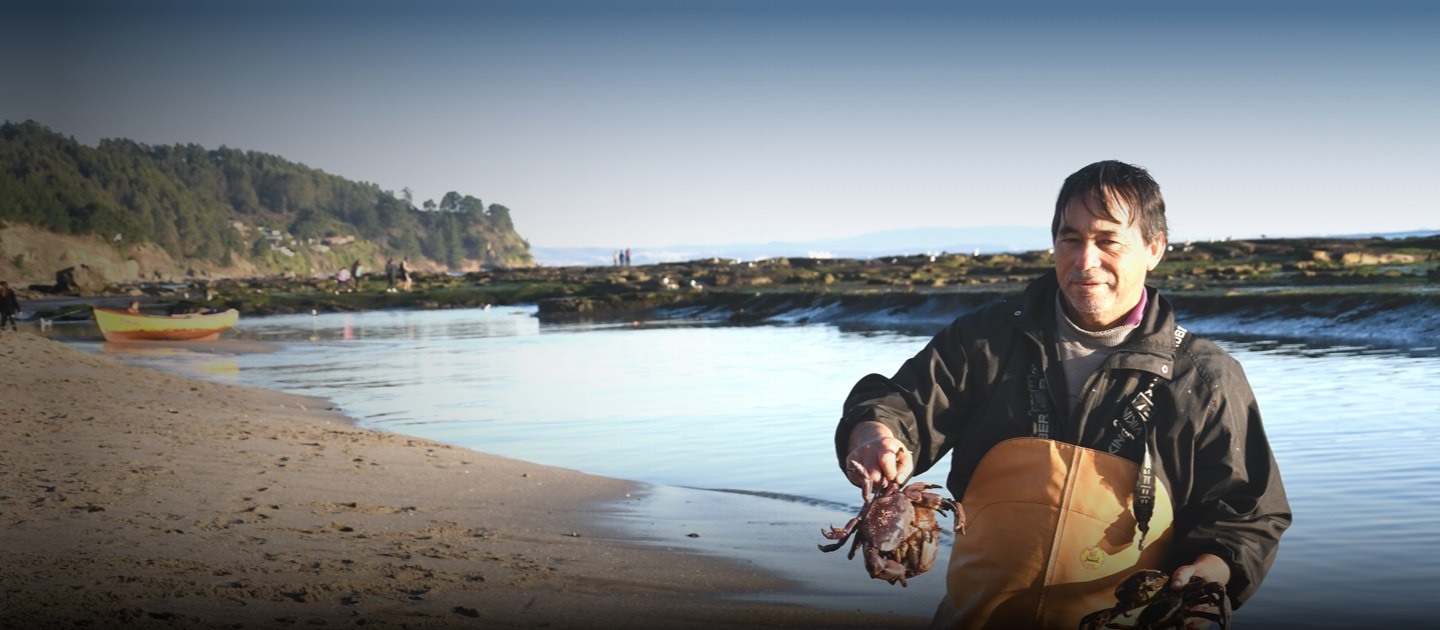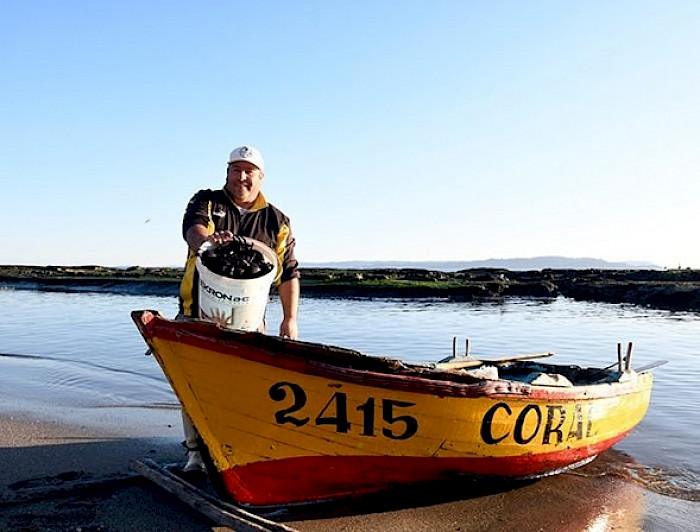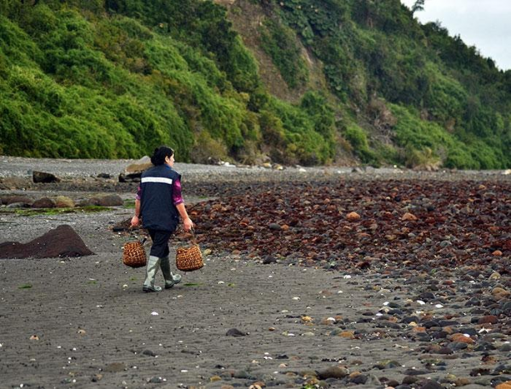
'Blue food revolution': great way to feed the world without destroying the planet
A group of international researchers calls to take advantage of the great diversity of ‘blue’ or aquatic foods in the coming decades. The group focuses on the crucial role of small-scale fisheries and aquaculture as a solution to some of the most complex coastal sustainability challenges.

photo_camera Researchers from around the world called to recognise worldwide the potential of fish, shellfish and algae (the so-called blue foods) as a source of nutritious and sustainable food. They also emphasise the relevant role of artisanal fisheries. (Photo: SECOS)
More than 2,500 species of fish, shellfish, aquatic plants and algae are caught or farmed worldwide for food. It provides jobs and income for more than 100 million people.
It feeds more than 1 billion according to the Blue Food Assessment (BFA), a group of more than 100 leading researchers led by Stanford University’s Center for Ocean Solutions and Center on Food Security and the Environment, Stockholm Resilience Centre and the EAT initiative.
The scientists concluded that fish, shellfish and algae offer untapped potential for global development if appropriate policies and investments implement, focusing on small-scale fisheries and aquaculture.
Last September, five scientific papers were published in the Nature journal, highlighting the opportunities the diversity of aquatic foods will have in the coming decades in areas such as nutrition, reducing the environmental footprint, and providing jobs for communities.
Their analysis shows that global demand for blue foods will double by 2050. In addition, this type of food has shown to have more nutritional benefits and more significant potential for sustainability than land-based animal foods, with a lower environmental impact than livestock.
“Blue foods are more diverse than is often thought, and so are the many small-scale fishing communities. Yet, they are often overlooked, even though they provide most of the blue foods people eat,” said Beatrice Crona, co-director of the BFA, director of the Stockholm Resilience Centre and senior researcher at SECOS.
Blue foods have proven better than land-based animal foods regarding their nutritional benefits and potential sustainability. Many blue food species are rich in essential nutrients: compared to chicken, trout has approximately 19 times more omega-3 fatty acids.
Meanwhile, oysters and mussels have 76 times more vitamin B-12 and five times more iron. According to the countries studied, the nutritional benefits of blue foods are significant for women, who benefit almost three times more from higher consumption than men.
Small-Scale Fisheries and Aquaculture
One of the five papers published by the BFA warns that politicians and decision-makers are not considering small-scale fisheries and aquaculture benefits when deciding about fishing laws, even though more than 100 million people make a living out of it. It is the primary source of income for more than one billion people worldwide.
The authors emphasized the importance of improving our understanding of the diversity, functions and resilience of small-scale fisheries and aquaculture. Scientists also advocate for intensified action and investment in this global sector.
Based on 70 worldwide case studies, the research highlights the value of small-scale blue food producers, traders, and processors. They have also played a vital role in the local community’s food and livelihoods during the Covid-19 pandemic.
For example, artisanal or small-scale fishers in Kenya quickly filled the void left by large international producers who scaled down their operations.
“Local stakeholders are in the best position to help people eat nutritiously,” said Rebecca Short, co-author of the paper and a researcher at the Stockholm Resilience Center in Sweden.
However, small-scale stakeholders face growing problems that policymakers have not addressed. These include subsidies targeted only at more prominent players and a lack of support to address the rapidly intensifying effects of climate change.
As explained by Stefan Gelcich, director of SECOS and professor at the Faculty of Biological Sciences, “the study highlights the diversity of small-scale blue food producers, ranging from state-of-the-art processing plants with imported equipment to the homemade baskets used by local traders in Zambia. As a result, no two players are the same, and policies must be tailored to reflect that.”
“For example, in Chile, a large portion of fishing is done on a small-scale and, what the article highlights, is the need to consider this practice when creating public policies,” added the researcher of the CAPES center.
For Gelcich, another key element is understanding fisheries as food systems. Not only as a natural resource that can be exported, but also a system in which ecological aspects are embedded and people’s lifestyles and culture.
“We need to highlight the role of artisanal fisheries in achieving sustainable and equitable systems around access to food from aquatic systems. In Chile, giving artisanal fisheries more opportunities to participate in exclusive right uses is a way of embracing the diversity we have in fisheries.”
The crises in small-scale fisheries and aquaculture, without the help of improved policy and governance, could threaten the food and nutrition security of millions of people around the world, highlights the BFA. In particular, it may affect those in regions most vulnerable to food insecurity and the impact of climate change, as they are most at risk.
“We have to make public policy that is adaptive to market changes, climate change, and global changes in general. The only way to do this is to allow artisanal fisheries to use the diversity they have to adapt to future challenges”.
Women's key role in artisanal fishing...
According to Gelcich, a relevant aspect of Chile’s artisanal fishing industry includes men and women throughout all the commercialization chains, including seaweed workers, male divers and boat women, amongst other activities.

According to the BFA’s analysis, women are critical to building a more sustainable and equitable food sector. As stated by researcher Dave Little, co-author and professor at the University of Stirling, “improving food security requires a gender perspective to overcome the structural disadvantages faced by women.”
Zoila Bustamante, president of the National Confederation of Artisanal Fishermen of Chile (CONAPACH), said “that beyond the need of making us more visible, there is also a lack of identity to reflect our fishing reality as a world of men and women. We need public policies beyond providing aid to have our identities included. Artisanal fishing is a culture that is not gender-inclusive or inclusive in general today. The lack of inclusion is not only of fisher women but also shore gatherers, seaweed workers, and many women who need to be reflected and recognized. If we are not visible as women in the sector, we will not be able to move forward,” she stated.
“The role of women in fishing is hard, even harder when peers are not convinced that one can do the job in different ways. We have to learn to diversify and become one, but not everyone wants to. Therefore, we need much more respect among peers, between men and women,” added the director of the National Association of Artisanal Fishing Women of Chile “Tejiendo Redes” (Weaving Nets).
The research highlights the need to encourage and support small-scale fishing, including diversity and technology, investment, policy, and development can enable small-scale fishers and fish farmers to continue to feed millions of people in the future.
Read the articles published by Blue Food Assessment.
The role of Artisanal Fisheries
Stefan Gelcich, professor at the Faculty of Biological Sciences, director of SECOS and CAPES researcher, has spent most of his career studying the interaction between socio-ecological systems in coastal areas, the conservation and sustainable management of marine resources, subtidal ecology and the analysis of public policies towards the governance of coastal natural resources.
The professor has studied the social, economic and biological consequences of granting exclusive use rights to small-scale artisanal fishers’ organizations through various studies published in prestigious international journals. In Chile, these policies are reflected in the Territorial Use Rights for Fishing or TURFs, a public policy applied in Chile since 1997.
The Center for Research in Social Complexity (CICS) by Universidad del Desarrollo and the University of California found that artisanal fishers tend to self-regulate collectively resource management systems.
The results endorsed the capacity of co-management systems for the exclusive use of resources to generate conditions for their sustainability, especially among artisanal fishers.
Another article published in Current Conservation covered the work carried out by Fundación Capital Azul, a combination of scientists and artisanal fishermen from the Valparaiso Region. They co-created a conservation program that creates restricted areas within a TURF, called “Marine Refuge”.
The fishermen themselves refrain from extracting resources, and those who fail to comply are sanctioned.
The programme has proven to have positive results in the maintenance of ecosystem services and increased marine biodiversity in the TURFs.


